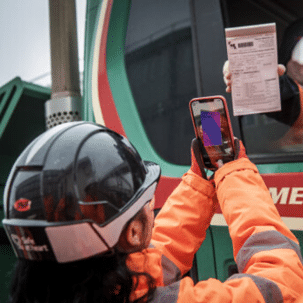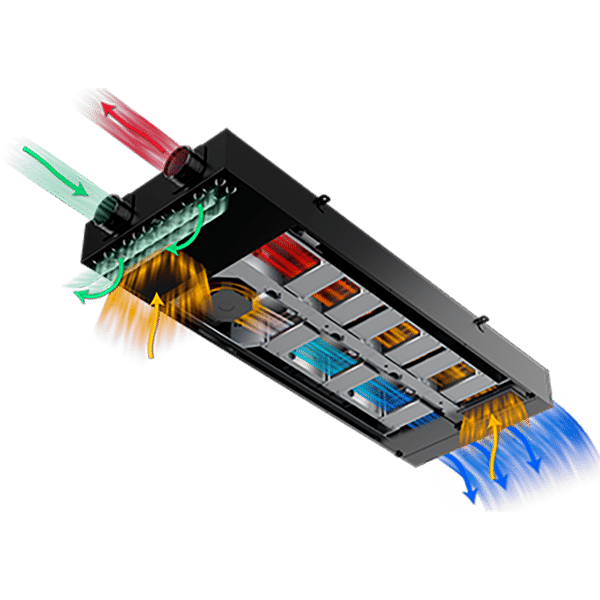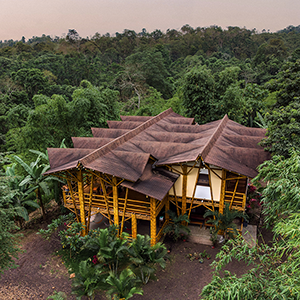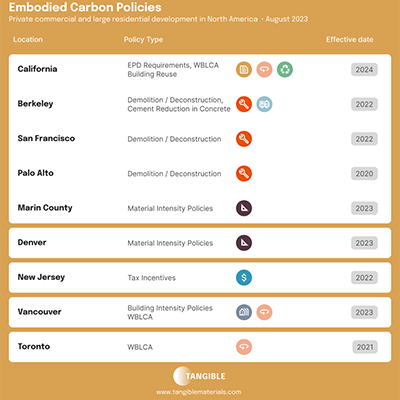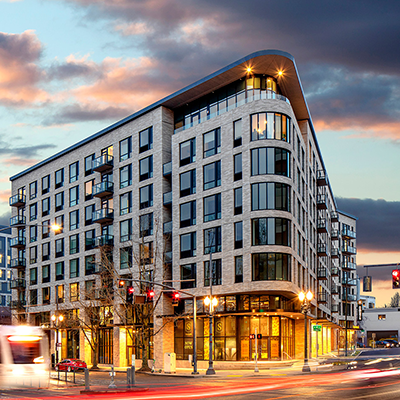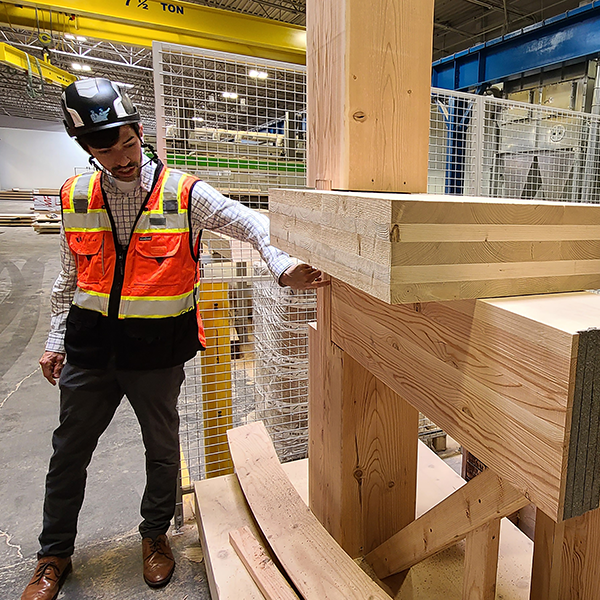by Pragya Gupta and Margaret Montgomery
At NBBJ, we help clients pursue health, community, and a zero-carbon future. We believe that all voices matter and root our work in research. As humans, we’re dependent on a healthy planet for our survival; as designers, we seek to honor that critical relationship. We see it as our duty and privilege to confront climate change and build sustainable communities, no matter the scale, location, or end user. It’s the only way we can thrive.
Our work overshadows our own footprint in scale, but we recognize the importance of tackling our own impact first; as a certified CarbonNeutral® firm, we plan to decrease our footprint by 50% by 2030 and achieve net-zero annual carbon emissions by 2040 in alignment with our commitment to The Climate Pledge. As a firm with global reach, we know that this will be challenging.
In our work, we’re preparing our clients for a low-carbon future, striving to dramatically reduce both embodied and operational carbon in our projects each year. NBBJ has tracked and reported our portfolio’s energy performance since 2010 as early adopters of the AIA 2030 Commitment, and our annual portfolio of active projects has grown steadily from an initial 11 million GSF to 75 million GSF in 2022. Although we still have many projects that fall short of our goals (and our Sustainability Action Plan continually strives to address that issue), we’re proud that this past year our active portfolio included almost 7 million GSF of projects that are zero or nearly zero operational carbon (90% or more fossil-fuel-free, depending on fossil fuel for only peaking loads).
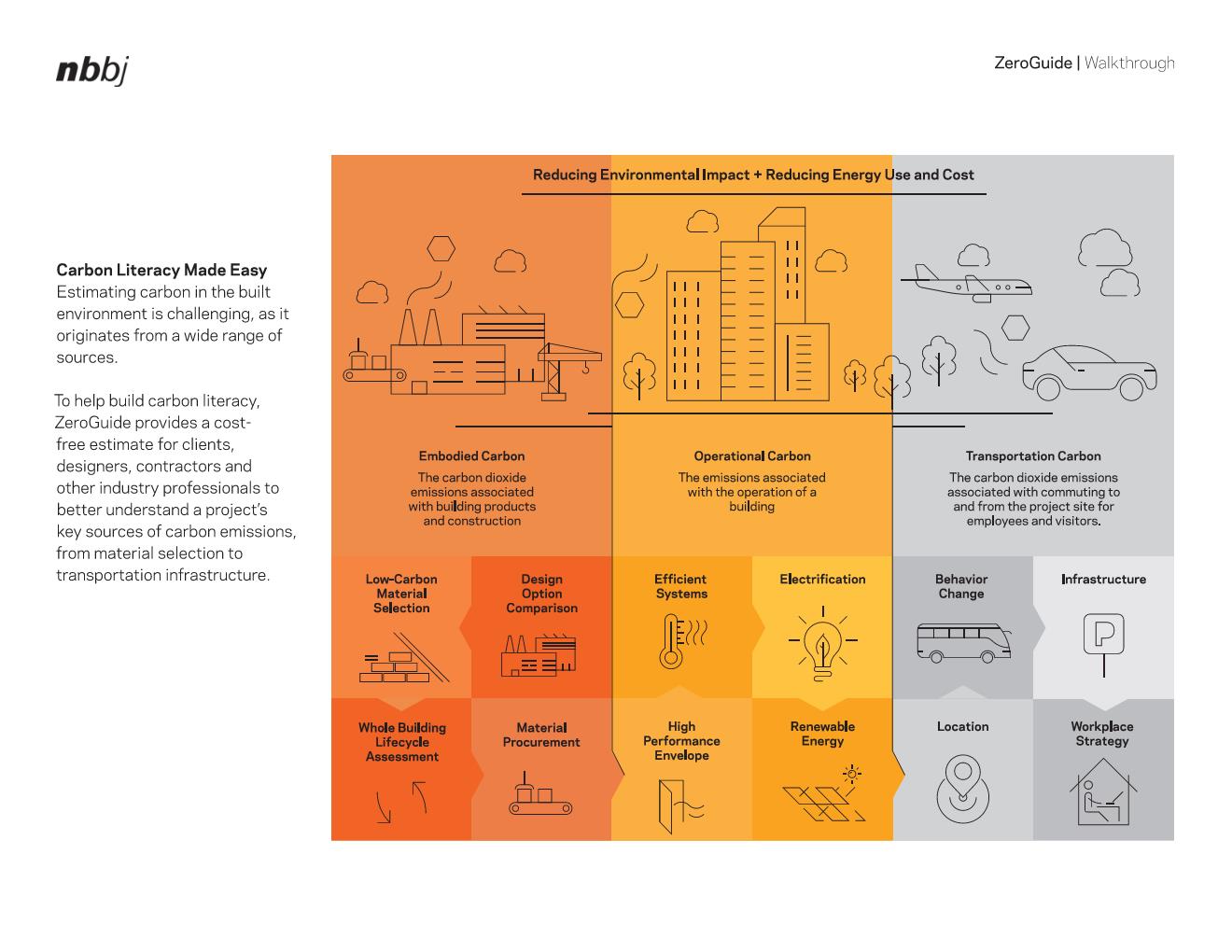
Carbon-based decision-making is an ethical imperative for all, but it is especially important to us as designers. Our carbon impact, the operational and embodied carbon of the built environment, is responsible for almost 40% of carbon emissions. But the time value of those carbon emissions is not equal; the critical period for reducing emissions is between now and 2030. Consequently, the “upfront” embodied carbon of our buildings is of critical importance, and we’re shining a light on this footprint in our practice with the aim of transforming our work. For example, a recent (confidential) project achieved a 50% reduction in embodied carbon from CLF 2019 baseline values. CLF’s work in establishing these baselines and our participation in piloting EC3 made this progress possible.
Despite huge advances in policies, standards, technology, and corporate commitments, navigating carbon estimation within the AEC industry is still a challenge. This is especially true in early project phases when data is scarce but the impact of design decisions is the largest.
We developed an internal tool, ZeroGuide, in 2020 as an early-stage design and education tool, a way to raise carbon literacy amongst NBBJ design teams and set projects on the right track as early as possible. Because carbon reduction is so urgent and the outcomes so critical, we’ve just launched ZeroGuide publicly as an open-access tool for the industry. It provides a guided carbon reduction journey and directional accuracy for owners, developers, designers, and engineers to navigate the complex world of carbon estimation in an intuitive format. We hope it helps others in this early-design quest for lower-carbon buildings.
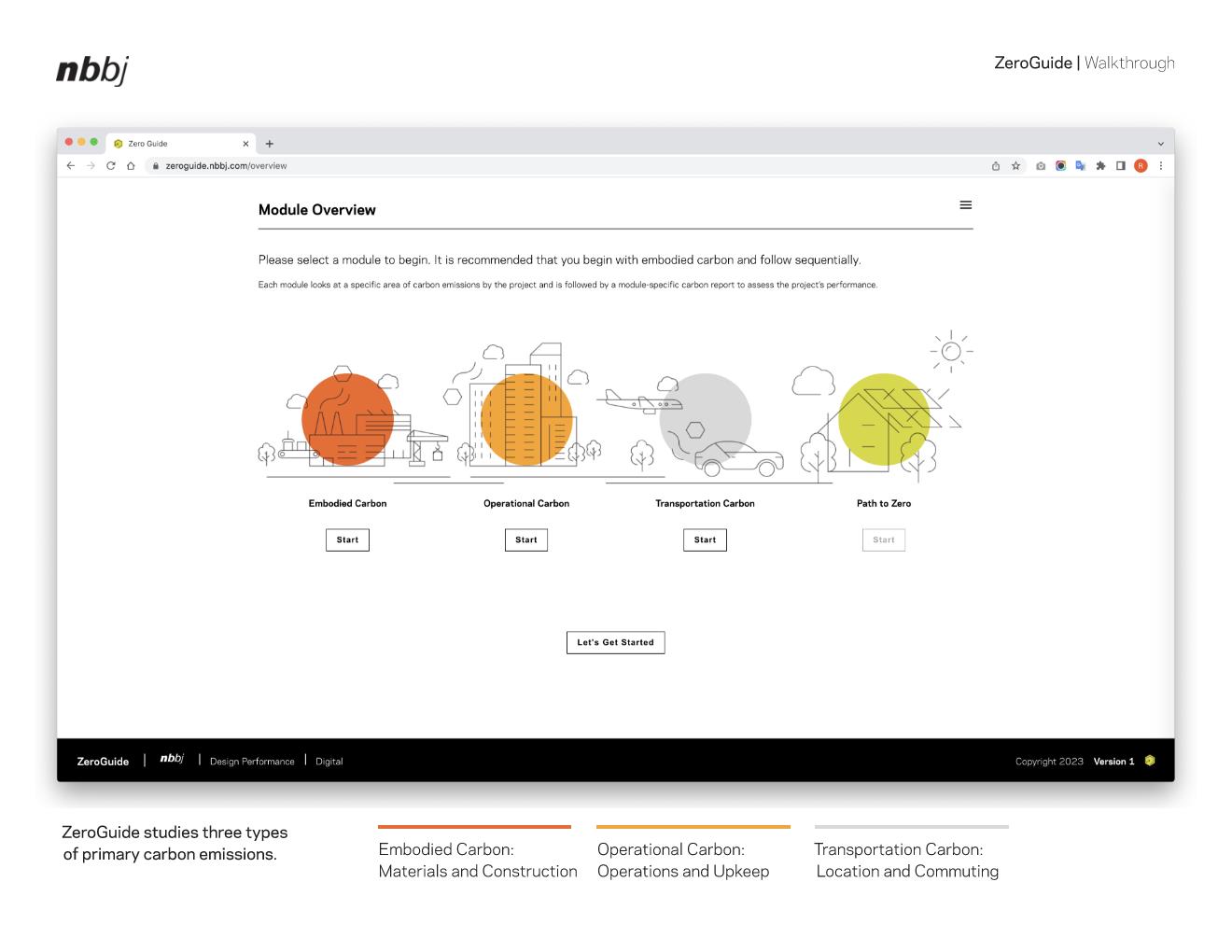
We’ve been working on ZeroGuide for over two years and have used it to influence some of our most ambitious projects. The tool helps estimate embodied, operational, and often-overlooked transportation carbon emissions that result from our work (how we plan our communities and where we decide to build). Although designers often enter the picture after a project site has been chosen, we occasionally have a chance to influence location. In one such situation, the significant difference in transportation impacts between the proposed suburban greenfield site and the alternate urban downtown site helped to influence the owner to revisit and ultimately move the project’s intended location.
We have plenty of unresolved questions and conundrums in this complex area of embodied carbon. For instance, what is included in area accounting hasn’t been standardized effectively yet. Should the denominator in embodied carbon intensity include parking area, for instance? We believe including the parking area not only dilutes the embodied carbon intensity of a project (a stance already adopted and standardized in the operational energy world), making it appear less than it is, but it also encourages more drive-alone transportation emissions. That’s how we calibrated ZeroGuide.
How does ZeroGuide work? It poses a series of questions to guide design decisions and considerations at the outset of projects. This digital tool estimates the carbon equivalent of emissions associated with all aspects of a project, provides real-time data analysis, and produces clear, actionable (and exportable) recommendations to get your project on the path to zero.
By augmenting industry-vetted APIs such as Zero Tool and PV Watts with intensive research and inputs from in-house and external experts, we’ve created a tool that facilitates meaningful client conversations and supports our commitment to carbon reduction here at NBBJ. With this launch, we hope it can do the same for many across the industry, making one more essential step toward the future we’re all working toward.
NBBJ has developed an internal tool, ZeroGuide, in 2020 as an early-stage design and education tool, a way to raise carbon literacy amongst NBBJ design teams and set projects on the right track as early as possible. The company has just launched ZeroGuide publicly as an open-access tool for the industry. It provides a guided carbon reduction journey and directional accuracy.

Pragya Gupta, Firmwide Design Computation Team Leader & Design Performance Analyst at NBBJ

Margaret Montgomery, Global Sustainable Design Leader at NBBJ
“The ‘upfront’ embodied carbon of our buildings is of critical importance, and we’re shining a light on this footprint in our practice with the aim of transforming our work. For example, a recent (confidential) project achieved a 50% reduction in embodied carbon from CLF 2019 baseline values.”

